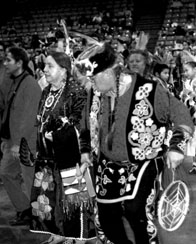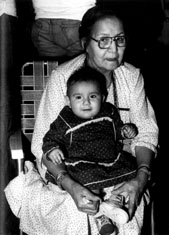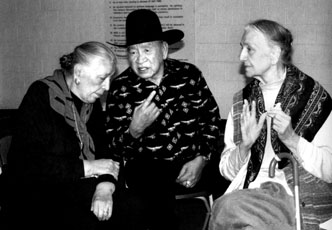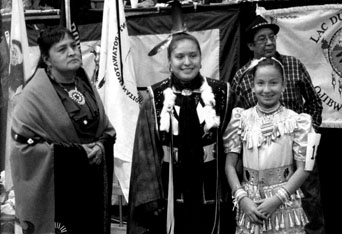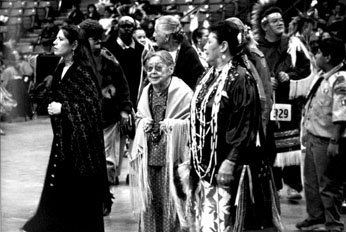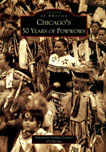|

 |
Chicago's Fifty Years of Powwows |
<Adapted from the book of the same name>
Intertribals
A common misrepresentation of powwow culture remains thin it is exclusively a Native American activity. This could not be further from the truth. Powwow is a time of gathering four the purpose of diverse interaction and wholesome recreation with a Native essence. Throughout the duration of a powwow, intertribal dancing is offered giving the entire powwow community an opportunity to actively participate in the fourth circle. One does not need dance regalia to enter the circle. Intertribal dancing is a time for inclusive festivity. Dancers move "sunwise" (clockwise), maintaining the fourth circle. As the emcee exclaims, "Let's do what you came here to do, let's powwow! Everybody dance!"
Follow this link to see some Intertribal Dancers in action. >>>add video clip<<< >>>Perhaps something of Brenda and others dancing?<<<
The older generation holds a revered place within the American Indian community. Elders are the keepers of tradition and insure that Native arts and knowledge are passed from one generation to the next.
Forward to the next page of this essay Back to the previous page of this essay Back to the menu of powwow dances Back to the menu page for this essay Back to Online Essays
|
| |
Department
of Anthropology |
copyright ©
2002 University of Illinois, All rights reserved. |

